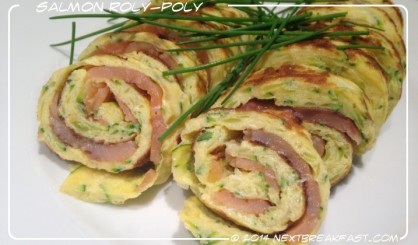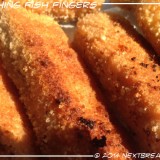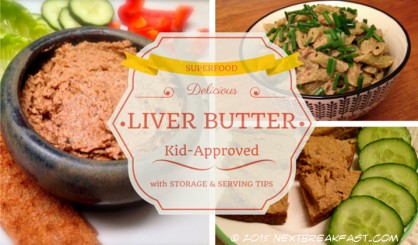Shopping Detective: Processed Meat Part III: Ham & Bacon
This is the third part of the processed meat series, you can find the first two if you follow the links below:
The first part about ingredients
The second part about sausages
Ham etc
Did you know that pork fat from free range pigs is one of the best sources of vitamin D? You see because pigs don’t have feathers (thats why they can’t fly!) or much fur… – they produce loads of vitamin D while in the sun, just like we do. Only they cover up in all-natural sunscreen called mud if the sun gets too much.
The best and the purest hams out there are cured using traditional fermenting methods and carry an appropriate price tag. One exception (price tag wise) is Rapelli San Pietro ham in Migros that is often on offer (up to 40% off) and has also just two ingredients: pork and sea salt – sea salt not table salt! However the meat is most probably not free range ( but Swiss, which means very strict regulations even for the conventionally raised).
So anything raw, naturally cured and from free range pigs (or grass fed cows) would be my first choice. Even better if I know the producer and saw the pigs and cows being truly free and happy, like in the case of Schluchalhof and Lützelhof.
The caviar of hams from my point of view is the Iberico ham – pigs are fed acorns in orchards, enjoying the mediterannean sunshine.
Immediately after weaning, the piglets are fattened on barley and maize for several weeks. The pigs are then allowed to roam in pasture and oak groves to feed naturally on grass, herbs, acorns, and roots, until the slaughtering time approaches. At that point, the diet may be strictly limited to olives or acorns for the best quality jamón ibérico, or may be a mix of acorns and commercial feed for lesser qualities. wiki
We love pata negra from time to time – its very expensive (but then – why is bad food so cheap?) and its not really a go-to sandwich filler – it’s a treat. Its worth researching different grades and cuts to make your experience more special – google Pata Negra and Jamon Iberico and you will find fascinating history and facts.
The next best thing is Italian raw cured ham, Parma or San Daniele.
Parma pigs must be specially bred Large White, Landrance and Duroc breeds, born and raised by authorised breeding farms located in 10 regions of central-northern Italy. Their diet is a specially regulated blend of grains, cereals and whey from Parmigiano-Reggiano cheese production ensuring a heavy pig with a moderate daily growth in an excellent state of health find out more from this parma ham site
I am not going to go into Pata Negra here, as its easily identifiable by price and label, but Italian raw ham deserves a quick investigation as you you can find this particular crown Parma or San Daniele seal in a several shops and the prices vary slightly.
1. Citterio Parma-Schinken: Pork, Sea salt. Source: Coop. Look out for that Parma crown – it is a universal Parma ham seal.
2. Parma Schinken (Denner): Pork, Table salt. This one is cheaper and you can find it in Denner, its got refined salt instead of sea salt, but its still pretty awesome as it has only two ingredients.
3. Citterio Rohschinken San Daniele: Pork, Table salt. Source: Coop. San Daniele ham comes from a different region of Italy – Friuli Venezia Giulia but it follows similar strict traditional curing guidelines as Parma. 100% natural product.
4. Migros Rapelli Rohschinken San Pietro: Pork, Sea salt. My favourite to catch on sale – I love the two ingredients products and it is delicious!
If you would like to read more about nutritional value of dry cured hams, here is a place to start
Moving on to cooked hams – they will all have multiple antioxidants and sugars added to preserve the pink appearance and prolong shelf-life. The key is to choose the ones with least amount of additives if cooking your own cold cuts is not an option at that moment.
5. Naturafarm Rollschinkli
Pork , stabilizer ( E325 ) , nitrite curing salt ( sodium chloride , preservative ( E250 ) ) , sugar , antioxidant ( E301 ) , Dextrose
There is a thing to be mentioned about hams that you have to boil, which are widely available in Europe, especially during autumn and winter. The instructions normally state to simmer for up to an hour and maybe even chuck the first water after it came to the boil (I would do that anyway). Intuitively I think that this process of simmering and rinsing will get rid of some of the additives – the first water is always murky and smells strongly of smoke. The resulting ham is much dryer than the pre-sliced, less smoky, doesn’t stay pink very long (but you can slice and freeze!) and tastes much less sweet to me than the pre-sliced. So I like those hams I have to cook 🙂
6. Naturaplan Bio Prosciutto Rustico
Pork , nitrite curing salt ( sodium chloride , preservative [ E 250 ] ) , stabilizer ( E331 ) , glucose syrup . I coloured this one orange because of glucose syrup, but remember that happy sunny pigs will give you vitamin D, especially if you eat that fat around the slice. The sugar content isn’t high UNLESS you need to avoid sugar or are following a low GI diet – then stay away!
7. Mortadella
Pork , bacon , pork tongues , rinds , nitrite curing salt ( sodium chloride , preservative E250 ), dextrose , sugar , flavor enhancer: monosodium glutamate , antioxidant: E301 , spices . Salt content of total : 2.6 % . This is an example of not so nice mortadella, which is actually a very traditional and pure product. We are faced with MSG and a couple of types of sugars from different origins – I wouldn’t consume this.
8. Mortadella Classica Slow Food
Pork , salt, spices , preservative E250 , antioxidant E301 . And this one is the traditional Mortadella from Bologna which actually deserves a separate post (hopefully I will get around it soon!). As you can see the additives are minimal, the label states that it comes from a small traditional producer and it tastes so good! In Italy it is possible to get even organic Mortadella – look out to have a try when on holiday.
Bacon
This card summarises how most people I know feel about bacon. It is magic, right? I must say that I grew up eating pure salt cured pork fat, salo (Ukrainian thing), as the result – I love the fat bit of bacon and the meat bit is kind of like raspberry seeds, acceptable but not necessary. However the enthusiasm of my Scottish and Irish friends has converted me to liking the meaty bacon too. So here is a small subjective selection of what we can buy in Switzerland:
1. Salted naturafarm bacon: Pork, Curing salt E250. This is un-smoked and un-sliced bacon – I like that! – its basically a a piece of pig, slightly cured. You can do wonderful things with it – my favourite is to simmer or sous-vide it slowly (getting rid of some of the additives), then cool, slice and freeze. You will then always have slices of lovely free range bacon ready to fry in seconds.
You can also slice and freeze raw – then put frozen straight on the frying pan or in the oven.
2. Smoked naturafarm bacon: Pork , nitrite curing salt (table salt , preservatives [ E 250 ] ) , stabilizer ( E331 ) , sugar , antioxidant ( E 301 ) . This one is pretty similar to its brother above, but smoked products often contain more additives. Why not cook it whole, throw away the first two waters, slice and freeze? It might be a budget and time friendly solution to the bacon problem!
3. Smoked bio bacon (was available in big blocks but not any more): Pork, nitrite curing salt (table salt , preservatives [ E 250 ] ). As good as it gets (in a supermarket) – No sugar, happy pigs running around in the sun – and those claims should be true as the Swiss organic regulations are super strict.
4. Organic Bacon from a farm, where you’ve been and met the pigs personally. Pork, nitrite curing salt (table salt , preservatives [ E 250 ] ), Spice mix. This would top my list – I saw the pigs, they are happy, playful and fluffy! The farm I am referring to is Schluchtalhof, but you may have a farm like that nearer to you. All I am saying – go meet the pigs and the farmers as thats the only way to be sure where your food comes from.
As a final nerdy word: further reading!
- Great overview on how and why meat is cured, its history and modern reality: Cured meat explained.
What are your family favourite cured meats? Have you tried to cure meat at home?
If you are feeling slightly apprehensive after reading about origins of meat and additives in your favourite hams, try this Bresaola recipe from And here we are.
I am looking forward to your comments and finds!






































Where/how does Spanish Serrano ham fit into this equation?
Hi Kellie, thank you for stopping by! Serrano comes from a different region of Spain, Sierra mountains and white breed of pigs, while Iberico comes from Andalusia, and the “black foot”, grey pigs. Here is an in-depth article on that topic http://www.thefoodieslarder.co.uk/food/jamon-iberico-vs-serrano/
Masha recently posted…Shopping Detective: Processed Meat Part III: Ham & Bacon
Just found you blog thanks to the Aussie Mum’s FB group – I love your work! Can’t wait to keep reading!
Hi Dale! Welcome!
Masha recently posted…Sourdough Crepes with Salmon and Avocado
I got your site from the mums group and thank you so much for this! It’s useful as I am trying to find foods without dextrose (ie corn) and had no idea until recently they put that in these meats!
Abbie recently posted…The investment of photography – Destination Wedding Photographer France
Hi Abbie, yes, dextrose is in so many products, you basically have to always-always read the ingredients…
Masha recently posted…Sprout Guacamole
Excellent article! Thank you!
Will you also be looking at the Swiss Ham and Trockenfleisch options?
Thank you! I am glad you found this helpful. I won’t be looking into the Swiss dried meat specifically, but you should be able to decipher the labels using the first part of this post about ingredients. Many have MSG added – Miine Region from Migros for example